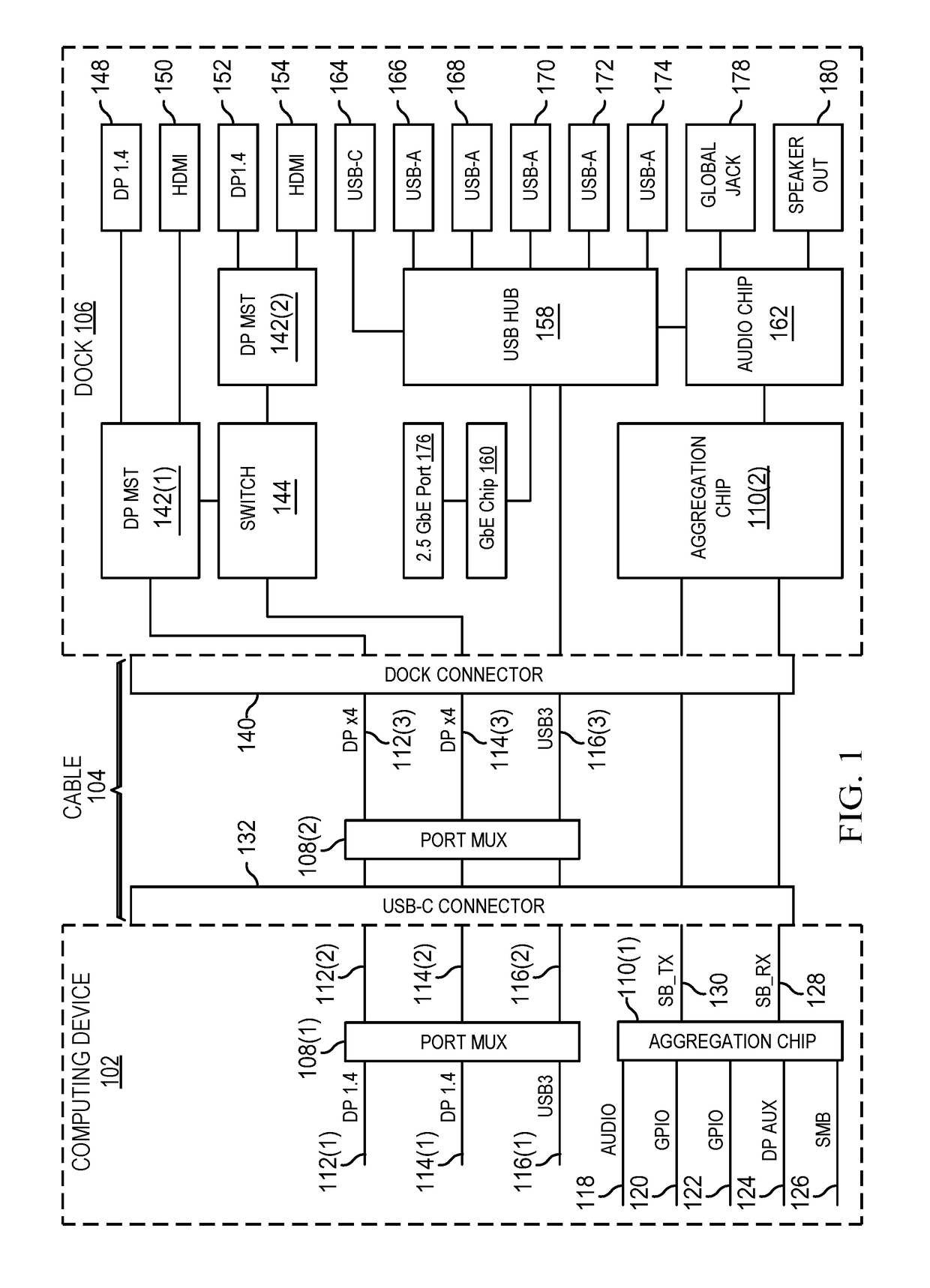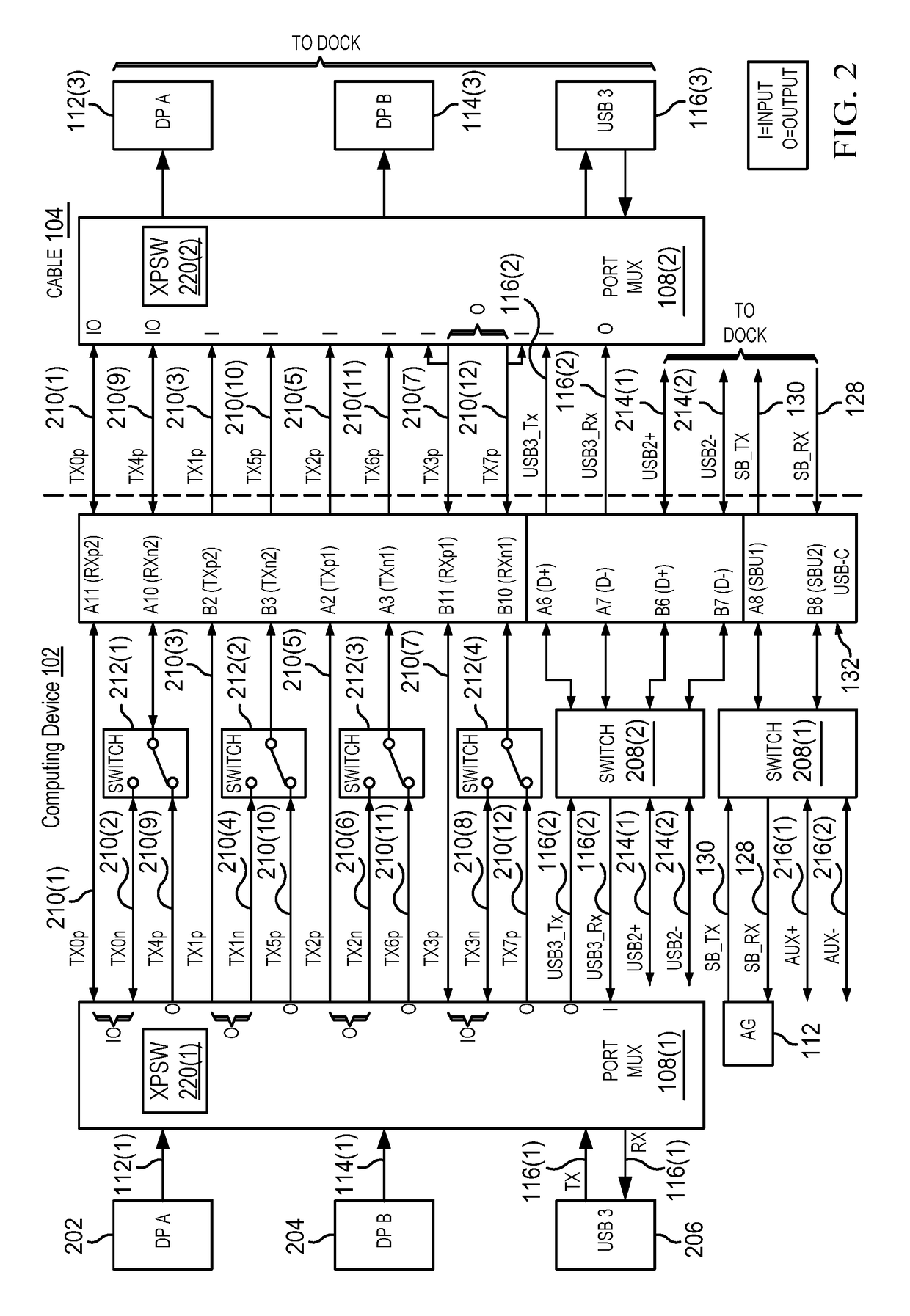Increasing data throughput of a universal serial bus (USB) type-C port
a technology of usb typec and data throughput, which is applied in the direction of electric digital data processing, instruments, etc., can solve the problems of limited number of lanes for carrying traffic, cost, and limitations of usb-c, and achieve the effect of increasing the throughput of usb typec ports
- Summary
- Abstract
- Description
- Claims
- Application Information
AI Technical Summary
Benefits of technology
Problems solved by technology
Method used
Image
Examples
example
Universal Serial Bus (USB)
[0083]FIG. 6A is a block diagram illustrating a configuration of a computing device's port mux and crosspoint switch to support a doc providing a USB-C compliant port according to some embodiments. FIG. 6A illustrates the connections in the port mux 108(1) (including the XPSW 220(1)) in the computing device 102 to communicate USB3 compliant signals via the dock 106 shown in FIG. 1.
[0084]Signal USB3_Txp 502(1) is routed from B8+ to O7+ in the XPSW 220(1) and output as signal Tx2p 210(5). Signal USB3_Txp 502(2) is routed from B8− to O7− in the XPSW 220(1) and output via the switch 212(3) as signal Tx6p 210(11).
[0085]Signal Tx3p 210(7) from the USB-C connector 130 is routed to A3+ using switch 212(4) and from A3+ to USB3_Rxp 504(1). Signal Tx7p 210(12) from the USB-C connector 130 is routed to A3− using switch 208(2) and from A31 to USB3_Rxn 504(2).
[0086]FIG. 6B is a diagram illustrating connections in the crosspoint switch of FIG. 6A according to some embodim...
PUM
 Login to View More
Login to View More Abstract
Description
Claims
Application Information
 Login to View More
Login to View More - R&D
- Intellectual Property
- Life Sciences
- Materials
- Tech Scout
- Unparalleled Data Quality
- Higher Quality Content
- 60% Fewer Hallucinations
Browse by: Latest US Patents, China's latest patents, Technical Efficacy Thesaurus, Application Domain, Technology Topic, Popular Technical Reports.
© 2025 PatSnap. All rights reserved.Legal|Privacy policy|Modern Slavery Act Transparency Statement|Sitemap|About US| Contact US: help@patsnap.com



